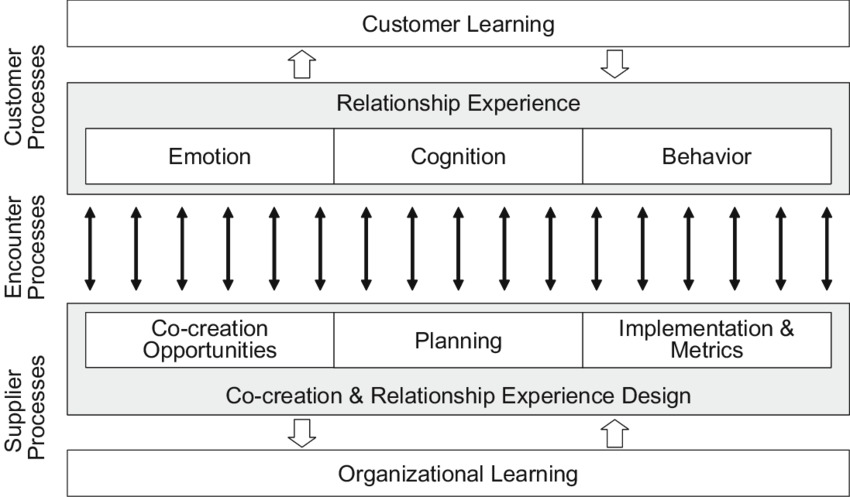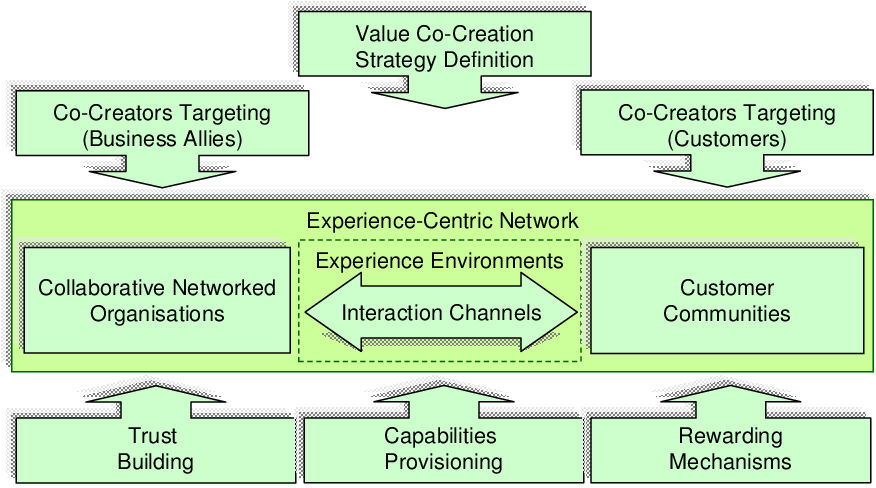
Value co-creation in gaming industry
The joint development of products and services has been going on for a long time. There are many models available for co-development. Some of them are more or less suitable for the gaming industry as well.
General co-creation models
In the framework (Figure 1) created by Aarikka-Stenroos & Jaakkola (2012) the key objective is problem solving as a process together with a client or a customer. In the framework there is most likely an already existing supplier-client collaboration or alternatively a strong intent to establish one.
The collaborative process between the supplier and customer begins by identifying what the customer needs and how this need can be fulfilled by the supplier. Is there a match between the supplier’s and customer’s resources?
In practice, the customer holds information about their business, needs and end goals while the question is: can the supplier meet these needs with methods and tools. The supplier might have to analyze and use its resources to come up with a solution fitting the needs of the customer.
Once the solution has been verified by both parties, the implementation of the solution begins and applying the value-in-use. However, there might be issues on both sides meaning finding the right balance between investments and sacrifices, triggers the success and commitment of the customer and supplier.

Figure 2 represents a conceptual framework created by Payne et. al. (2007) which was established as a result of a large research for B2B and B2C companies representing a wide array of different branches.
In this framework there are three different layers of processes: customer, encounter and supplier. In the customer processes the customer learns from the experience of the relationship and this impacts the engaging behavior in the future value co-creation activities with the supplier.
Similarly, the supplier processes include movement with organizational learning which indicates that the more the supplier learns about the customer, more opportunities are being identified for how to improve co-creation with customers.
In the encounter processes the arrows pointing out from customer to supplier and the other way around, demonstrate the interaction between the encounters. Value co-creation takes place in this layer.

Romero and Molina (2009) visualized an experience-centric network framework to describe which concepts, methods, and technologies are necessary for successful experience-centric networks (Figure 3).

In Romero and Molina’s (2009) framework the overarching value co-creation strategy can be seen as a value creation system which consists of people, organizations, and technology. These resources are put together and once collaborating with organizations and customers, it can co-produce value offerings.
In the experience environments i.e., the co-creation dimension, the customers’ role depends on their competencies and willingness to co-create new products.
The role of the business allies is highly dependent on their capabilities and resources. If these meet and exceed co-creation experiences, the next step is to jointly co-create value in collaboration with the right co-creators.
Co-creation practices in gaming industry
There is not a specific framework that dominates in gaming industry. Different types of models are used among stakeholders (gaming studios, publishers, subscription service providers, distribution channel, etc). Due to gaming as a service (GaaS) business model is a very recent approach in the gaming industry, the experiments of different value co-creation frameworks are expected to continue.
References
Aarikka-Stenroos, L. & Jaakkola, E. 2012. Value co-creation in knowledge intensive business services: A dyadic perspective on the joint problem-solving process. Industrial Marketing Management. Vol 41, pp. 15-26.
Payne, A., Storbacka, K. & Frow, P. 2007. Managing the co-creation of value. Academy of Marketing Science. Vol 36, Issue 1, pp. 83-96.
Romero, David & Molina, Arturo. 2009. Value Co-creation and Co-Innovation: Linking Networked Organisations and Customer Communities. 401-412. 10.1007/978-3-642-04568-4_42.